Spotify
Understanding the UX of Spotify, the world's most popular music app
Case study

Spotify isn’t just a streaming platform; it’s a space where users craft the soundtrack to their lives. My goal with this project was to dive deep into the user experience, uncovering how people navigate the vast world of music, create playlists that reflect their moods, and personalize their listening journey.
Driven by a desire to enhance user satisfaction and make these interactions smoother, I conducted usability tests, surveys, and analyzed reviews to paint a comprehensive picture of the Spotify experience. This project is more than just research; it's a reflection of my commitment to understanding user needs and finding ways to improve their digital experiences.

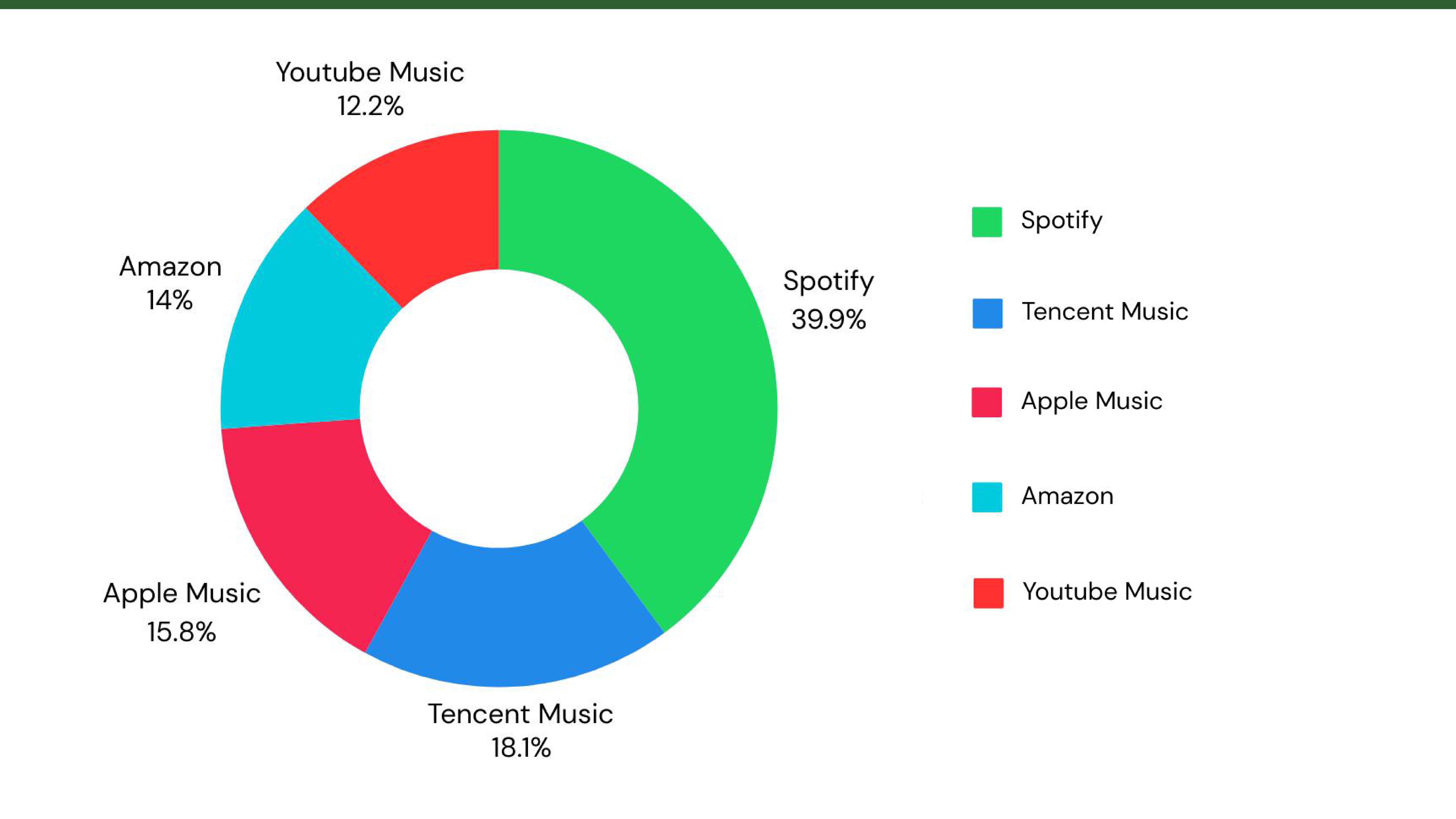
Spotify holds a commanding lead in the music streaming industry, capturing 39.9% of global subscribers. This positions Spotify far ahead of its closest competitor, solidifying its status as the go-to platform for music enthusiasts worldwide. Its expansive music library, personalized playlists, and innovative features have set it apart, making it the preferred choice for millions seeking a superior streaming experience.
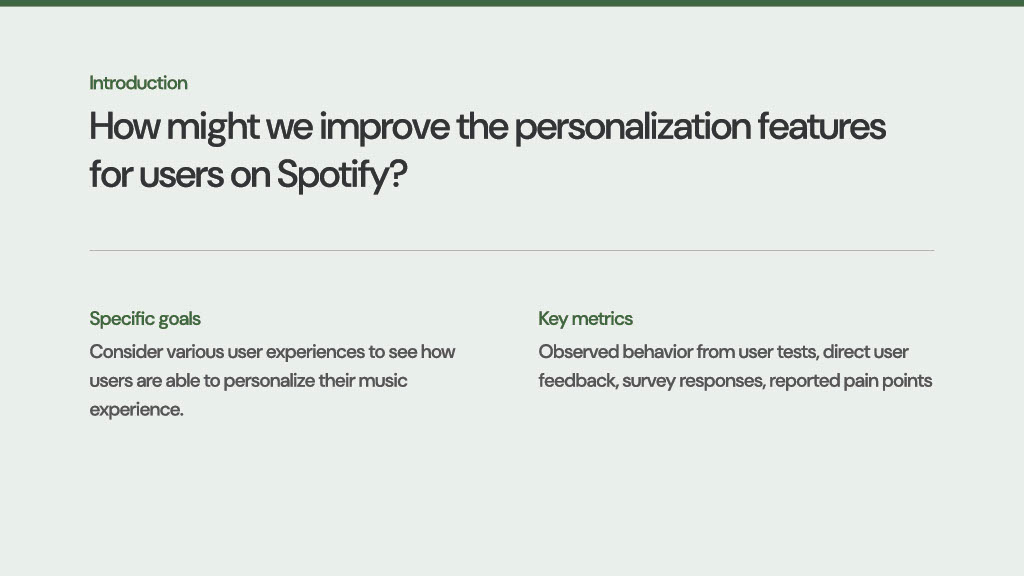

To thoroughly understand the user experience on Spotify, I employed a mixed-methods approach. This included survey data from 12 respondents to capture broad user insights and quantitative trends. A competitive analysis provided context on how Spotify compares to its peers in the market. In-depth observations of three users offered qualitative, real-world insights into their interactions with the app. Additionally, an accessibility report was conducted to identify potential barriers for diverse user groups. Finally, I analyzed app store reviews, a rich source of secondary, qualitative feedback, to uncover recurring themes and user sentiments. This comprehensive approach ensures a well-rounded understanding of user needs and challenges.

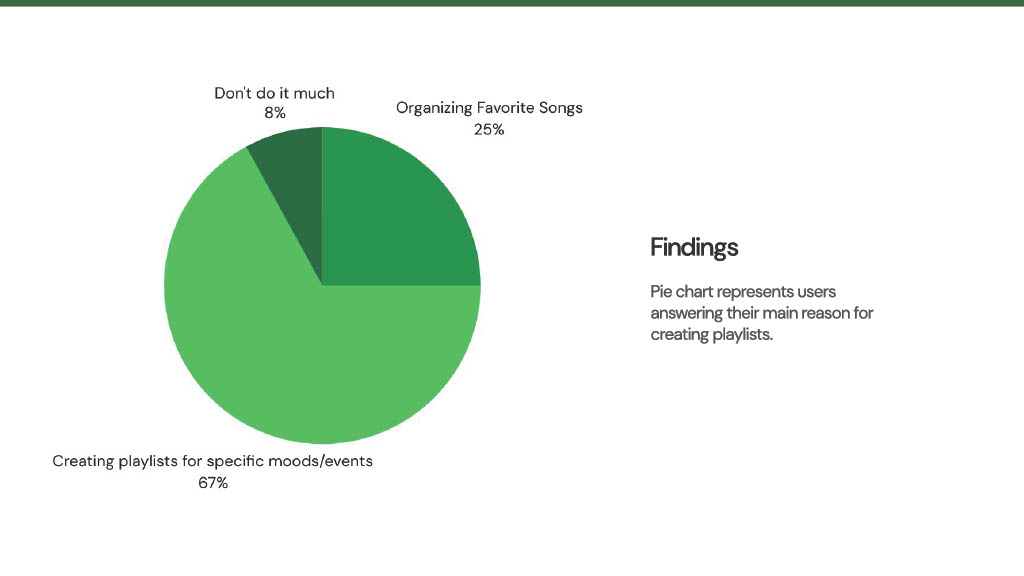
The survey data revealed that most users create playlists to suit specific moods or events, highlighting the personal and emotional connection users have with their music curation. Additionally, when it comes to Spotify's recommended music features, such as Discover Weekly, the majority of respondents expressed being somewhat satisfied or neutral. This suggests that while Spotify's algorithmic suggestions are appreciated to some extent, there is room for improvement to better align recommendations with user preferences.

To better understand Spotify’s diverse audience and tailor its features to various generational needs, we developed three key personas based on qualitative data and user observations:
Jim (55+)
Jim represents older users who value simplicity and familiarity in their app experience. He enjoys listening to classic genres and creating playlists for specific occasions. However, he finds some of Spotify's newer features, such as smart shuffle and cover art customization, to be confusing or cumbersome. Enhancing intuitive design and offering clear tutorials could help users like Jim navigate the app more comfortably and confidently.
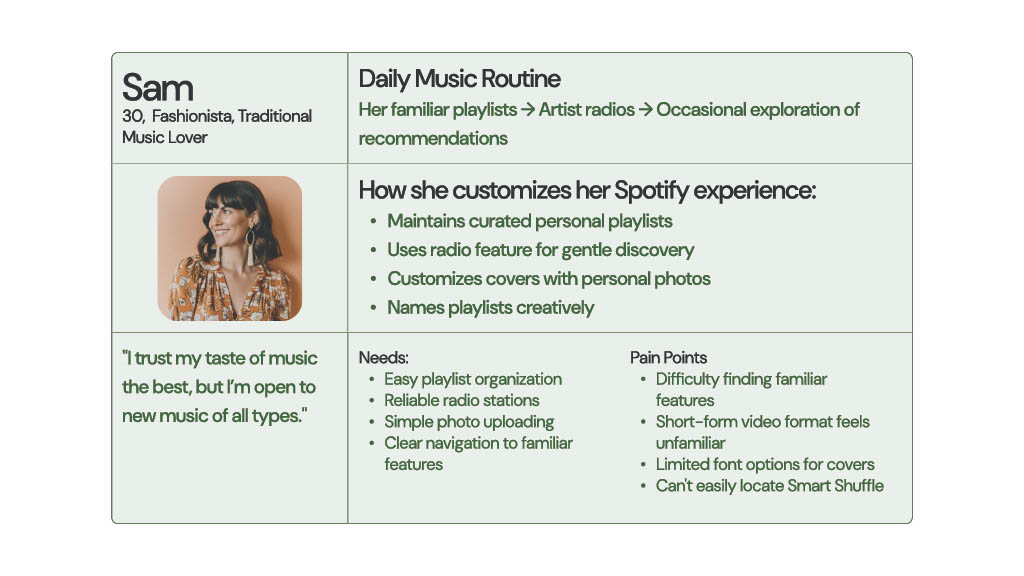
Sam (Millennial Fashionista Woman)
Sam is a style-conscious millennial who uses Spotify to set the mood for her daily routines and social events. She appreciates the personalization options but desires more seamless control over playlist creation and editing. Features like mood-based recommendations and customizable home screens would enhance her experience, making it easier to match her playlists with her lifestyle and preferences.
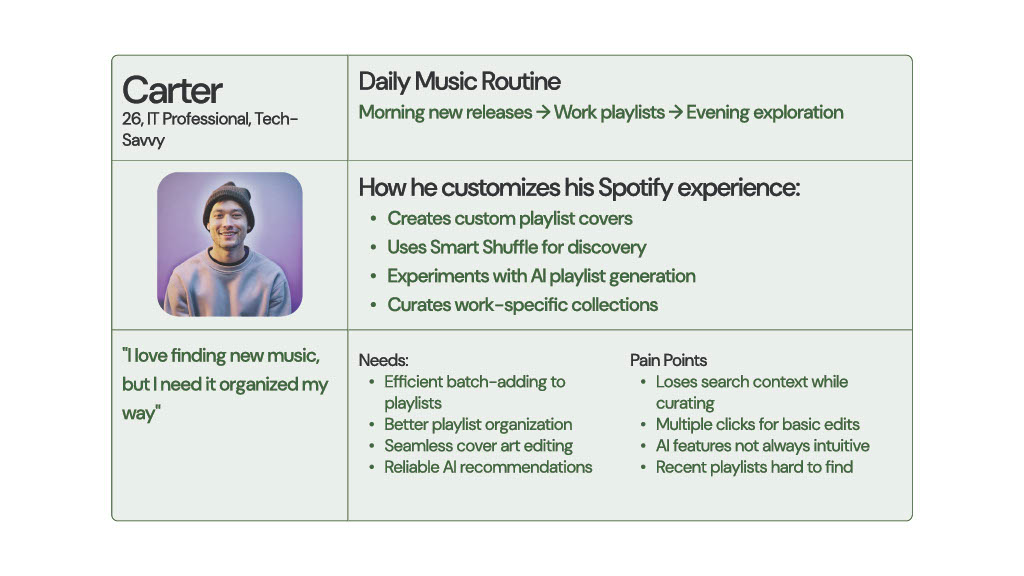
Carter (Tech-Savvy Gen Z)
Carter, a tech-savvy Gen Z user, thrives on exploring new music and leveraging all the latest app features. He enjoys the dynamic elements of Spotify but sometimes feels overwhelmed by the sheer volume of options and features. Simplifying navigation and offering more intuitive shortcuts, along with customizable experiences, can make the app even more engaging for users like Carter, who seek innovation but also efficiency.
These personas illustrate the diverse needs across generations, guiding Spotify to refine its user experience for broader accessibility and satisfaction.

The user journey map offers a comprehensive view of how different users interact with Spotify, highlighting key actions, needs, pain points, and emotional responses throughout their experience. By identifying these touchpoints, we can better understand the diverse ways users engage with the app, uncovering opportunities to streamline features, enhance personalization, and create a more intuitive, enjoyable experience for all generations.

Users stay with Spotify for its superior music discovery, social integration, and extensive library, but improvements in feature accessibility, user control, and tailored experiences could further solidify its lead over competitors like Apple Music, ensuring long-term loyalty across all demographics.

These recommendations stem from a comprehensive analysis of user feedback, usability testing, and competitor comparisons. Through surveys, user observations, and reviews, we identified common pain points such as feature complexity, lack of intuitive guidance, and accessibility limitations. By addressing these issues, we aim to enhance user satisfaction, foster a more inclusive experience, and strengthen user loyalty. Simplifying the interface, offering interactive tutorials, and allowing for personalized customization will make Spotify more user-friendly, ensuring that it continues to be the preferred music streaming platform for a diverse audience.
